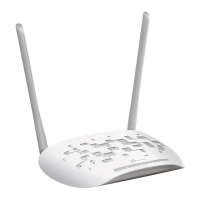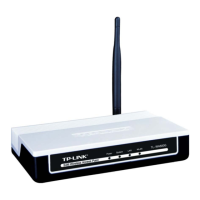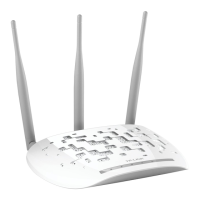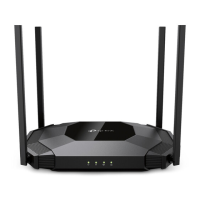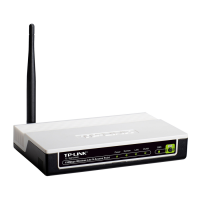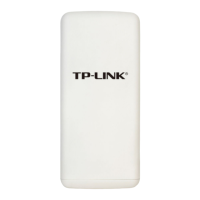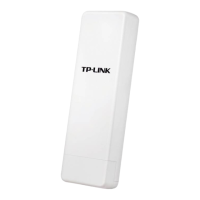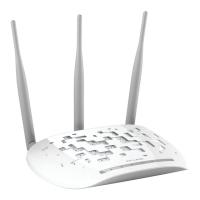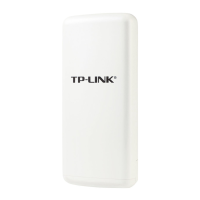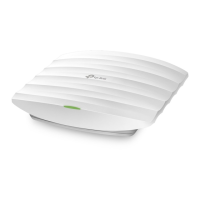TL-WA801ND 300Mbps Wireless N Access Point User Guide
Figure 4-8 Network
¾ MAC Address - The physical address of the AP. The value can't be changed.
¾ Type - Select Dynamic IP(DHCP) to get IP address from DHCP server or select Static IP to
configure IP address manually from the drop-down list.
¾ IP Address - Enter the IP address of your AP in dotted-decimal notation (factory default
setting is 192.168.0.254).
¾ Subnet Mask - An address code that determines the size of the network. Normally use
255.255.255.0 as the subnet mask.
¾ Gateway - The gateway should be in the same subnet as your IP address.
)
Note:
1. If you change the IP Address, you must use the new IP Address to log in the AP.
2. If the new LAN IP Address you set is not in the same subnet with the IP Address pool of DHCP
sever, the IP Address pool will not take effect until it is re-configured accordingly.
4.6 Wireless
The Wireless option, improving functionality and performance for wireless network, can help you
make the AP an ideal solution for your wireless network. Here you can create a wireless local area
network just through a few settings. Wireless Settings is used for the configuration of some basic
parameters of the AP. Wireless Security provides three different security types to secure your data
and thus provide greater security for your wireless network. MAC filtering allows you to control the
access of wireless stations to the AP. Wireless Advanced allows you to configure some advanced
parameters for the AP. Throughput Monitor helps to watch wireless throughput information
Wireless statistics enables you to get detailed information about the current connected wireless
stations.
There are six submenus under the Wireless menu (shown in Figure 4-9): Wireless Settings,
Wireless Security, Wireless MAC Filtering, Wireless Advanced, Wireless Statistics and
Throughput Monitor. Click any of them, and you will be able to configure the corresponding
function. The detailed explanations for each submenu are provided below.
23
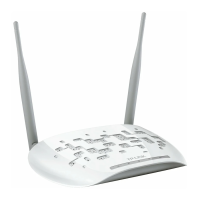
